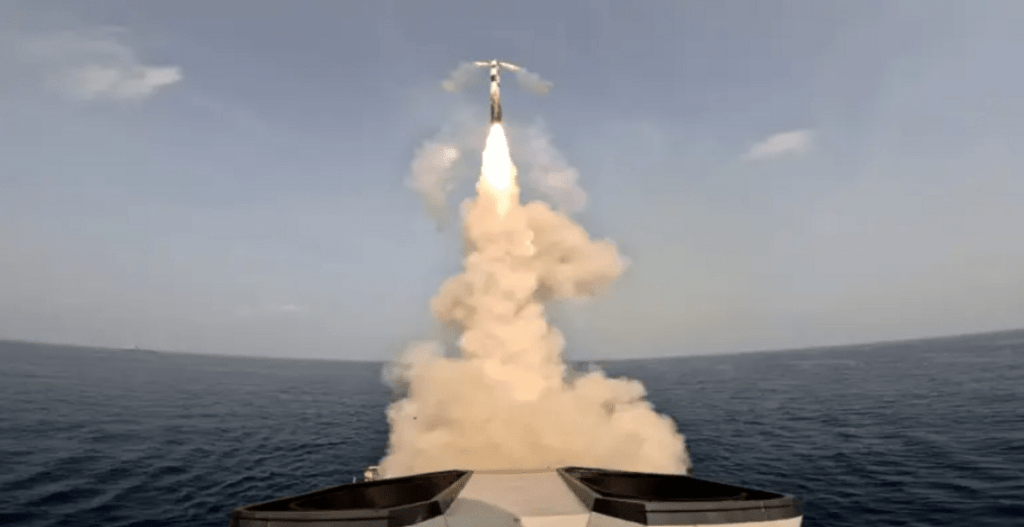India's New 'Rocket Force': A Bold Move to Counter China's PLARF

India’s SLCM program is strategically motivated by the increasing naval presence of China in the Indian Ocean and the advancements in missile technology by Pakistan.
The addition of SLCMs will provide a sea-based element to strengthen India’s existing land-based rocket force, a vision initially put forth by former Chief of Defense Staff General Bipin Rawat. The establishment of the Indian Rocket Force is contingent upon the successful operation of theatre commands. These missiles are set to be installed on submarines that will be built as part of Project 75I, with German ThyssenKrupp AG and Spanish Navantia competing for the contract. India’s plan includes extending the range of its SLCMs to 800 kilometers, encompassing key Chinese cities like Shanghai, Hangzhou, Wenzhou, Fuzhou, and Xiamen.
The SLCMs are integral to India’s strategic defense capabilities as the country aims to develop a robust rocket force. A successful trial of the SLCM was conducted in February 2023, demonstrating its effectiveness within a range of 402 kilometers. There are two variations of the missile – the Land Attack Cruise Missile (LACM) and the Anti-Ship Cruise Missile (ASCM) designed for targeting naval vessels.
India is actively pursuing advanced non-contact warfighting capabilities with its indigenous SLCMs and short to medium-range ballistic missiles, mirroring the PLA’s Rocket Force (PLARF) responsible for Beijing’s array of land-based ballistic missiles, both nuclear and conventional. The PLARF comprises 40 brigades.
The country is also developing long-range land attack cruise missiles with an impressive reach of 1500 kilometers. Indian industries like Larsen and Toubro, Godrej, and Sameer are collaborating with the Defense Research and Development Organisation (DRDO) to achieve this goal.
SLCMs are primarily intended for deployment on submarines and have a shorter range compared to Intercontinental Ballistic Missiles (ICBMs).
SLCMs are utilized for precise strikes on land-based targets or naval assets, whereas ICBMs are a crucial part of the nation’s nuclear deterrent. SLCMs are deployed from submarines, which can operate stealthily underwater, making them less vulnerable to detection and preemptive strikes.
During their flight, SLCMs follow a low-altitude trajectory, flying close to the surface to avoid detection by radar systems. They can be swiftly launched from submarines, offering a rapid response capability. The successful integration of SLCMs onto submarines like the Kalvari-class SSKs and the nuclear-powered Arihant ballistic missile submarines (SSBNs) is essential. The initial testing of SLCMs will be conducted on the Russian-origin Sindhughosh (kilo class) submarines as per the plan. The DRDO has also finalized the development of the Pralay ballistic missiles with a strike range of 150-500 km. The long-range land-attack cruise missiles and SLCMs with a range of 1000 km are expected to be ready for production within a couple of years. Coastal batteries armed with the Brahmos anti-ship cruise missile (ASCM) may be included in the Indian Rocket Force, along with land-based long-range ASCMs derived from the subsonic Nirbhay cruise missile. These systems are likely to play a significant role in any future anti-access/area denial architecture established by India in the Andaman and Nicobar Islands.
India intends to maintain the IRF and the Strategic Forces Command (SFC), responsible for the country’s nuclear arsenal, as separate entities. Therefore, the SFC will retain control over the nuclear-capable Prithvi-II (350 km range), Shaurya (750 km), Agni-1 (700 km), Agni-2 (2,000 km), Agni-3 (3,000 km), Agni-4 (4,000 km), and Agni-5 (over 5,000 km) ballistic missiles, as well as nuclear-powered submarines armed with nuclear-tipped missiles and fighter jets capable of delivering nuclear gravity bombs.
There exists a significant disparity between China’s PLA Rocket Force and India’s emerging initiatives. China has the ability to cause more damage to India by launching a barrage of conventional missiles.


